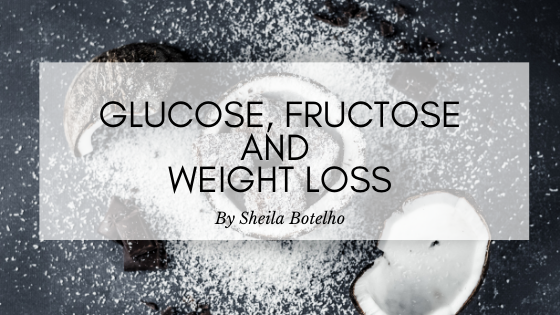You’ve been doing everything in your power to eat healthy. You’ve stopped having that afternoon sweet treat with your mid-afternoon coffee. You don’t even buy cookies anymore. So why won’t your weight budge? And why are the cravings still there? Taking a closer look at glucose, fructose and their affect on weight loss may help shed some light on things.
All calories are not created equal
A tool that I’ve found helpful in getting people started onto a more balanced way of eating is The Glycemic Index. I was first educated in using this back in 1998 and it radically changed the way I eat. The Glycemic index is a system that was designed in 1981 by Dr. David J. Jenkins and his team at the University of Toronto. It ranks foods on a scale from 0 – 100, based on their effect on blood glucose levels. You can see how this scale has been very helpful to diabetics who need to carefully manage what they eat.
Glucose is vital to life and is an important part of our metabolism. Our bodies produce it and we have a constant reserve of it in our bloodstream for energy. Fructose is very different. It’s not a natural part of our make up and our bodies do not produce it.
When we eat foods containing a lot of sugar, most of the fructose gets metabolized by the liver, where it’s turned into fat. Then it’s secreted into our blood and in turn, deposited and stored in fat cells. Fructose causes resistance to a hormone called leptin. Leptin is a chemical that signals the brain to stop being hungry.
The fat regulator
In simple terms: more fat = more leptin = enough energy = no need to eat. What so cool is: Increased leptin makes us release more fat and raises our metabolic rate. It’s a beautiful system.
AND
When the brain is resistant to leptin, this regulatory process does not work.
You see, fructose doesn’t make you feel full after a meal in the same way as glucose. Even with the exact same number of calories. This leads to increased caloric intake. There are many studies surrounding how unhealthy eating throws off the hypothalamus gland and how it interacts with the thyroid gland, and the connection to obesity.
Eating foods that are lower on the glycemic scale and that are glucose-based, you can begin to break through this barrier of storing too much fat. These types of foods also don’t spike sugar levels sharply and drop off dramatically. Instead, when you combine low glycemic foods with a pattern of eating every few hours throughout the day, your blood sugar levels never go too high or too low. This allows leptin levels to regulate over time.
I tell my clients exactly what to eat so they can effectively regulate their leptin levels over time and get their bodies working like they should again. A couple of other factors I look at when helping people adopt healthy eating patterns are: Metabolic Typing, Bioindividuality, Blood Typing, Exercise Ratios, Life Stressors, and Sleep Habits. Each of these has an effect on all of our body systems, which in turn, affects overall health and weight maintenance. You can learn more in my 5 Day Healthy
All of these factors that I look at with people individually does three things:
- They’re empowered to have information about their body.
- They’re encouraged to take responsibility for the state of their health.
- They gain hope, because there is SO much they can do to improve it.
I’m grateful to be a part of the process.
So when you look at the foods your eating, make sure you read food labels to make sure that you know what’s in them. Look for words like: Beet sugar, corn sweetener, corn syrup, dextrose, fructose, fruit juice concentrates, glucose, high-fructose corn syrup, invert sugar, lactose, maltose, malt syrup, raw sugar, sucrose, sugar syrup, cane crystals, cane sugar, crystalline fructose, evaporated cane juice, corn syrup solids, malt syrup. There are 57 types of sugar available to us. Wow, right?
Many sugars are genetically modified, making them more cost-effective to food companies. This is another way our health can take a hit. Look for glucose-based sweetness in the foods you eat, like those found in fresh fruit. Your tastebuds will become familiar with a natural form of sweetness. You’ll also get lots of beautiful fibre that helps keep your insulin levels balanced.
The good news is that you get to decide what to eat. And there are many healthy options available. I’m here to help!
Want more healthy lifestyle tips and tasty nutritious recipes? Subscribe here to get them fresh off the press straight to your inbox.
Blessings,
Sheila

